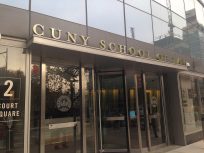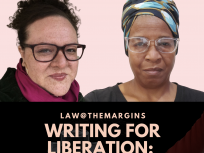We are witnessing intensified attacks on the validity of survivor experiences, the value of immigrant lives and the dignity of all people of color. There is a lot at stake, with the pending renewal of the Violence Against Women Act (VAWA).
We must review the gains we have made with big legislation like VAWA, and engage in a profoundly honest conversation about its limitations, especially for immigrants and communities of color. We must also explore community-driven solutions that might offer options or alternatives to state-based interventions. As community members and leaders, we think it’s time to have honest and even uncomfortable conversations about the intersections of gender justice and anti-racist movements.
Legal Momentum, a women’s legal defense and education fund based out of New York, provides a robust history of VAWA’s evolution over the years. Congress passed the Violence Against Women Act of 1994 as part of the Violent Crime Control and Law Enforcement Act of 1994. VAWA was originally designed to improve criminal justice responses to domestic violence and increase the availability of services to those victims. The original protections and provisions were expanded in 2000 to include protections for battered immigrants, sexual assault survivors, and victims of dating violence. This enabled domestic violence victims who fled across state lines to obtain custody orders without returning to jurisdictions where they may be in danger, and improved enforcement of protection orders across state and tribal lines.
We think it’s time to have honest and even uncomfortable conversations about the intersections of gender justice and anti-racist movements.
VAWA 2005 provided increased focus on access to services for communities of color, immigrant women, and tribal and Native communities and LGBTQ communities. As a result of increased funding, new programs such as Court Training and Improvements, Child Witness, and Culturally Specific programs have been implemented across the United States.
In addition to the nearly $4 billion in VAWA grants awarded to state, tribal and local governments and non-profit organizations, the American Recovery and Reinvestment Act, signed into law on February 19, 2009, includes an additional $225 million for OVW to combat the legacy of laws and social norms that long served to justify violence against women.
VAWA on the Ground
VAWA has been instrumental in providing access to criminal and civil legal advocacy, and health services for survivors of domestic violence, sexual assault, and stalking.
However, a study done by the Ms. Foundation, Safety and Justice for All referencing VAWA successes notes that most intimate partner violence is not reported to the police.
“A striking four-fifths of all rapes, three-quarters of all physical assaults, and one-half of all stalking perpetrated against women are not reported to the police. These findings suggest that many victims of intimate partner violence do not consider the justice system an appropriate intervention. Despite the great need as evidenced by long waiting lists at many battered women’s shelters and sexual violence programs, a large percentage of women never turn to service organizations. While shelters, crisis services, and legal remedies are crucial for those who choose to (or are able to) access them, the movement knows very little about the far greater number of women who instead utilize more informal helping networks.”
We haven’t made other alternatives where people can seek health and safety for their situation. People lead such deeply complex lives.
Sally MacNichol, Co-ED of CONNECT, which strives to help change the beliefs, behaviors and institutions that perpetuate violence, points out that “one of the greatest fears that people have is the fear of child welfare folks. People are extremely afraid of those narratives about your children being taken away. It’s still a very fearful situation for women who have children.” Sally points out that those engaged in the DV movement are supposed to listen to survivors. Many simply want the abuse to stop. Many, she says, “do not want to split up with the person that’s abusive to them, and we haven’t heard that. We haven’t made other alternatives where people can seek health and safety for their situation. People lead such deeply complex lives.” The current responses must be supplemented with creative, alternative answers to community requests.
Through legal empowerment, grassroots mobilization and transformative education, CONNECT seeks to create safe families and peaceful communities. “The police are not trusted in many communities. The fear is overwhelming.” Sally mentions that, even in communities that don’t engage with police in domestic violence matters, state-based responses have a drastic impact on children. “Extensive adult interface with the criminal, civil, and family court systems has enormous implications for children. Poor children and children of color are placed in foster care or otherwise tracked within the child welfare system in significant numbers.”
Community Driven Responses
Rawaa Nancy Albilal, President, and Danny Salim, Senior Director, of the Arab-American Family Support Center provide culturally and linguistically specific services to low-income immigrant communities and know that these specific services are critical in addressing community-based needs. Arab-American Family Support Center provides services at the intersection of immigrant status, domestic violence and impact on youth. These services, Nancy says, must serve as a safety net for the populations they serve. Arab-American Family Support Center works as a conduit and a safe place where communities can “seek services without judgment, without penalty, without any way in which they get penalized for accessing these services” from the state. These services, Danny says, must include and recognize indigenous practices and community practices.
Organizations such as Arab-American Family Support Center, which recognizes and strengthens family and community membership, knows that “for the majority of the world, the extended family serves as a safety net.” For children in families with strong intrafamily support systems, extended family members often step in in moments of crisis to provide support for children. “They provide stability and continuity for children.” Federal, state and local policies that interfere with this familial bond threaten the makeup of the family and create internal crises: “When the safety net is taken away due to war, families getting separated [at the border], the travel ban not allowing families to be united, the government and its various systems cannot be a suitable alternative to the family unit. Especially when government policies or systems do not see members of that family or members of that group – immigrant populations and people of color in particular – as equal or deserving of humanity or compassion.” For many people trapped in social policies that isolate them, community-based organizations are the closest thing to having extended family nearby.
The impact of violent state intervention in cases of domestic violence is traumatizing, particularly when children are isolated in an unfamiliar place, surrounded by people who don’t speak their native language or don’t come from the traditions of the children that are placed in state care. Nancy explains that we must bring all sides together to figure out what would be acceptable for the family in order to begin the healing process without resorting to state services and police. “There are many instances where a domestic violence survivor would ask for us [the organization] to stay in their lives through interventions as a healing mechanism.” Arab-American Family Support Center regularly matches family members with other healthy families as mentors or coaches, especially as men being examples to one another. Nancy emphasizes that one size cannot fit all. Individuals “are coming to us in different places in their immigration journey, abilities, skill sets and resources, and with what they’re going through and the circumstances.”
For many people trapped in social policies that isolate them, community-based organizations are the closest thing to having extended family nearby.
At the Violence Intervention Program Inc., we work with predominantly Latinx immigrant survivors of intimate partner and sexual abuse that may otherwise never access assistance if it were not for a safe alternative to state-based services. Given the unintended consequences of systems-involvement and the very real fact that a majority of survivors are not availing themselves of those interventions, current community-based organizations must respond to the requests and needs of the communities they are supporting. Our work must include the narratives that are not universally accepted. It must include the individuals who seek restorative and/or transformative justice practices. It must include individuals who do not wish to obtain a court protective order or separate from their partners. It must include considerations of culture, language and heritage.
We must step away from the generalized template of legal recourse as the only answer to a complex problem. We must listen to the survivors who have been telling us that state-based responses are not making them safer. We must explore strategies that center survivors who are immigrants and people of color.
This article is based on a webinar held in October titled Addressing Intimate Partner and Sexual Violence Through Community Based Approaches. You can view the full original webinar here. Read also Morgan Moone’s related piece Domestic Violence, Asylum, and the Unraveling of Women’s Rights, here.




